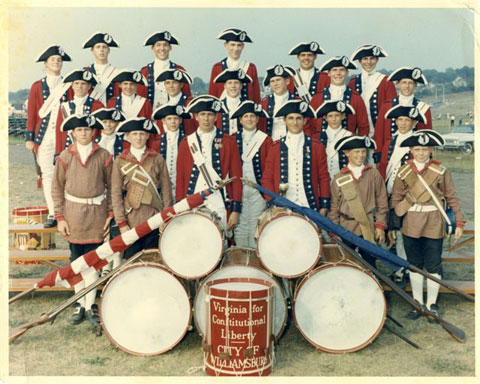
Colonial Williamsburg Fifes and Drums, 1967 (CW photo)
I am fourth from the left in the front next to George Carroll the corps leader.
On Friday and Saturday I traveled with my family to Williamsburg, Virginia for the 50th anniversary of the Colonial Williamsburg Fifes and Drums. I was a member from 1964 to 1972. The fife and drum corps was established in 1958, and its first drum major was George Carroll, a master drummer and historian of 18th century martial music.

Musical Tattoo on the Mall in Washington, D.C. in 1967 (CW newspaper clipping)
At the last minute I was handed the mace (drum major’s stick) and led the corps in its performance with the Old Guard Fife and Drum Corps, the Marine Corps Band, and the Air Force Pipe Band. I was 13 at the time.
I joined at 9 years of age, took up the fife, and quickly rose through the ranks, which were based on instrument proficiency. We performed throughout the year in Colonial Williamsburg, and during my tenure, played for presidents Johnson and Nixon as well as many other world leaders and dignitaries. We were paid for what we did, and my nine years savings helped cover much of my college education.
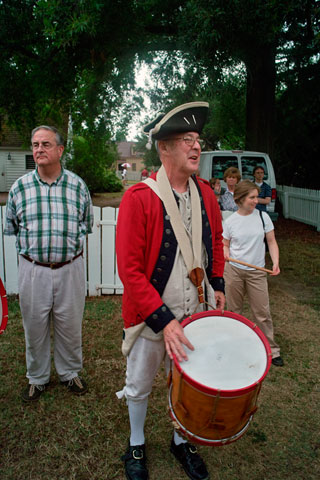
George Carroll, the first CW Fife and Drum leader, and
Mark Riemer, fifer, on left.
Some 250 alumni of the Fifes and Drums returned to Williamsburg for the 50th anniversary, which featured performances by us and the current corps preceding the fireworks display on the 4th of July, and a parade down the Duke Gloucester Street the next day. Thousands of cheering people thronged the street and watched the performances given on Market Square by the three assembled alumni corps and the junior and senior corps of the present fifes and drums.
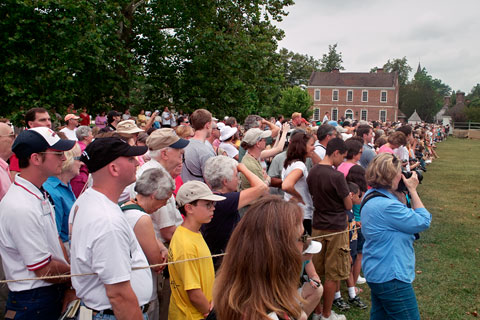
The crowd watching one of the corps enter the field.
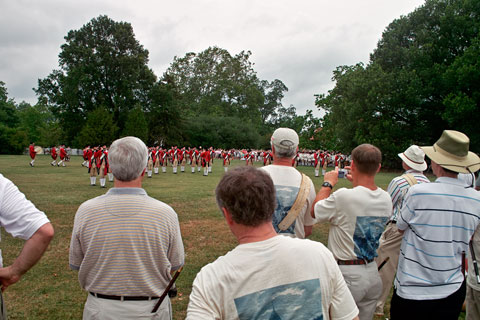
From the ranks of the alumni corps as the present day senior corps performs.
Being a part of the CW Fifes and Drums was a life shaping experience, and provided lessons in excellence, leadership, and discipline. These are oft repeated clichés, of course, but having been at the pinnacle of something unique and rarefied, it has been–for me–impossible over the years to measure achievement on any other scale. Everything I have endeavored to do since has been informed by that early experience and by the relationships forged in the corps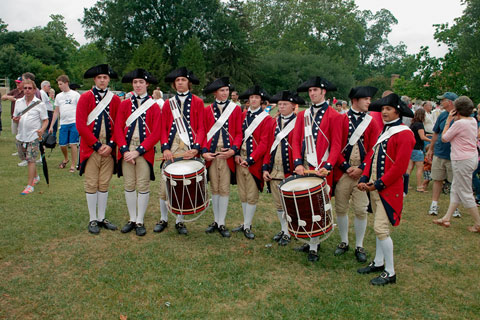
Senior corps members posing for photographs.
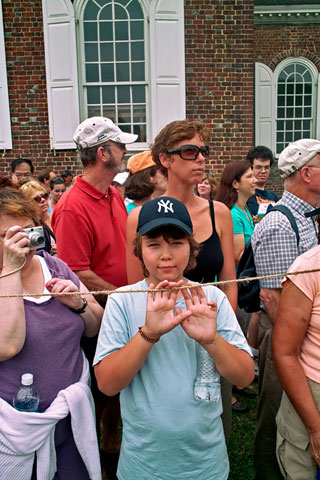
My son Brendan and wife Renée behind the rope line.
The festivities ended with a banquet in the Virginia Room of the Williamsburg Lodge, a place I had performed in many times–now newly rebuilt. I was seated next to George Kusel, who worked on the staff of the corps for several years, and who provided much needed leadership for the fifers–George Carroll was foremost a drummer.
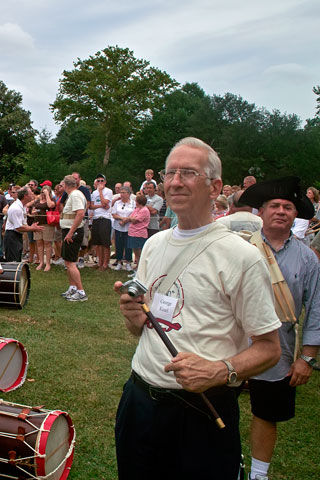
George Kusel in the alumni ranks
He was also an avid photographer, which interested me, having recently watched a National Geographic photographer at work photographing Colonial Williamsburg. With George’s encouragement, I purchased my first 35mm slr, a Nikkormat (made by Nikon), a somewhat pricey camera for a kid, but something I could afford thanks to the money I earned with the corps. And as they say, the rest is history.